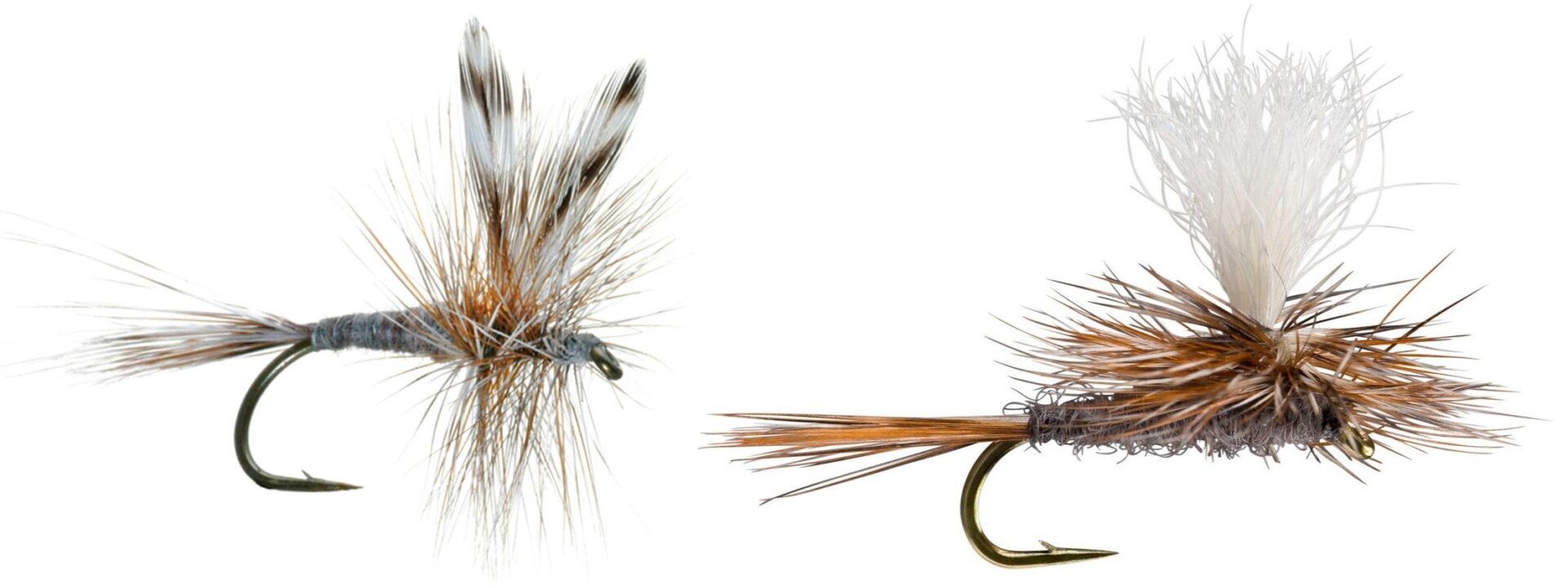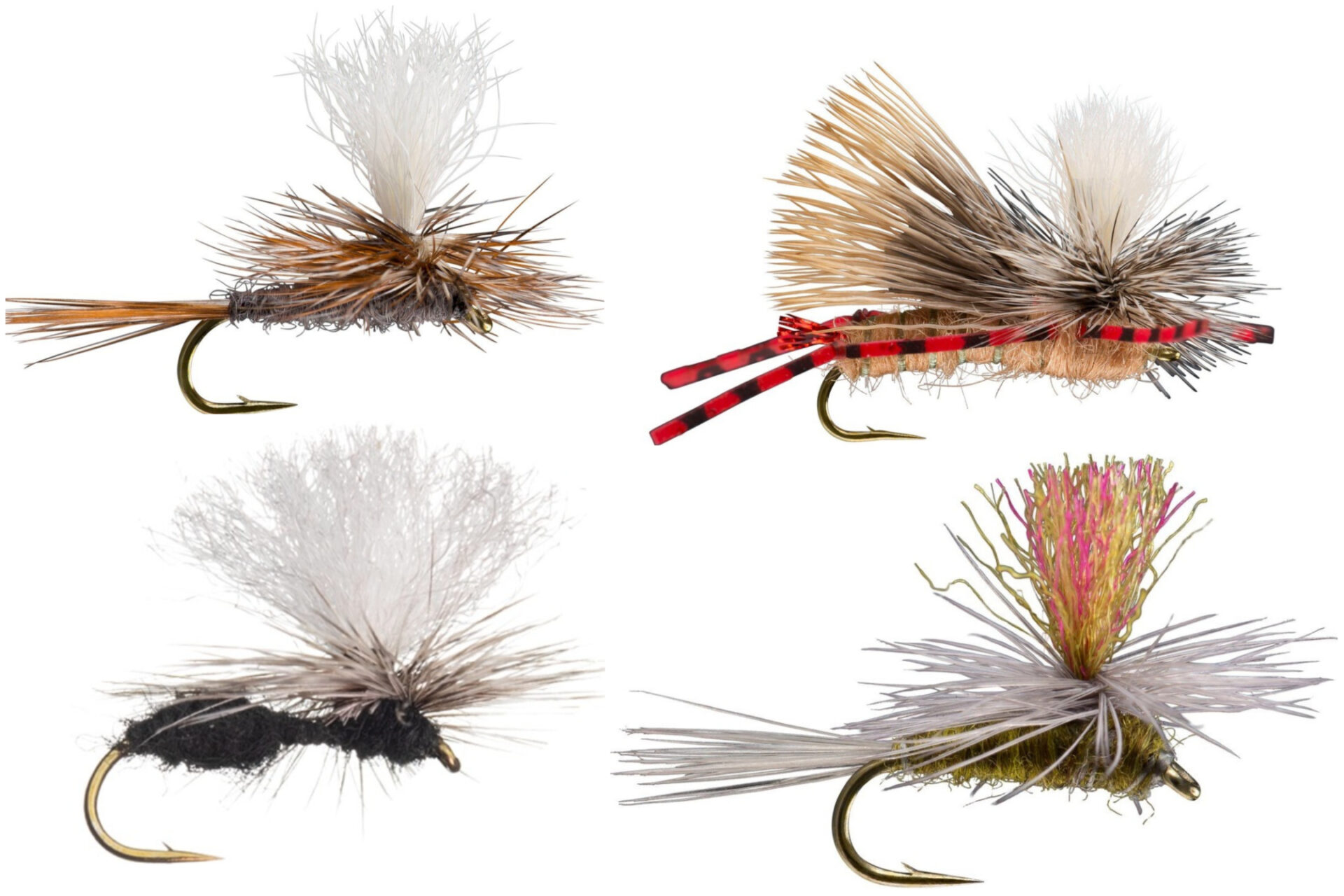DRY REVIVAL
Once ignored, these unconventional dry flies are now a must-have
Advertisement

THE PARACHUTE CONCEPT
Classic dry flies (above left) have a hackle feather wrapped around the hook shank; the feather’s barbules stick out perpendicular to the hook shank, helping the fly float on top of the water, similar to an aquatic insect. With parachute flies (above right), the hackle feather is wrapped horizontally around a single sturdy upright wing instead. This is a style of fly, rather than a specific pattern, so many traditional dry flies can be tied in parachute form. The name “parachute” comes from the idea the horizontal hackle causes the fly to land more gently on the water.
When I began fly fishing more than 30 years ago, I was vaguely aware of parachute flies, but I never saw one in a shop or in anyone’s fly box. The concept has been around since at least the 1940s, but it was generally considered a pointy-headed exercise in fly design, without much practical value. That was partly because parachute flies were very tricky to tie. Also, the idea that they land more gently is questionable, given that dry flies are virtually weightless to begin with. All of this relegated the parachute concept to the margins.
Advertisement

